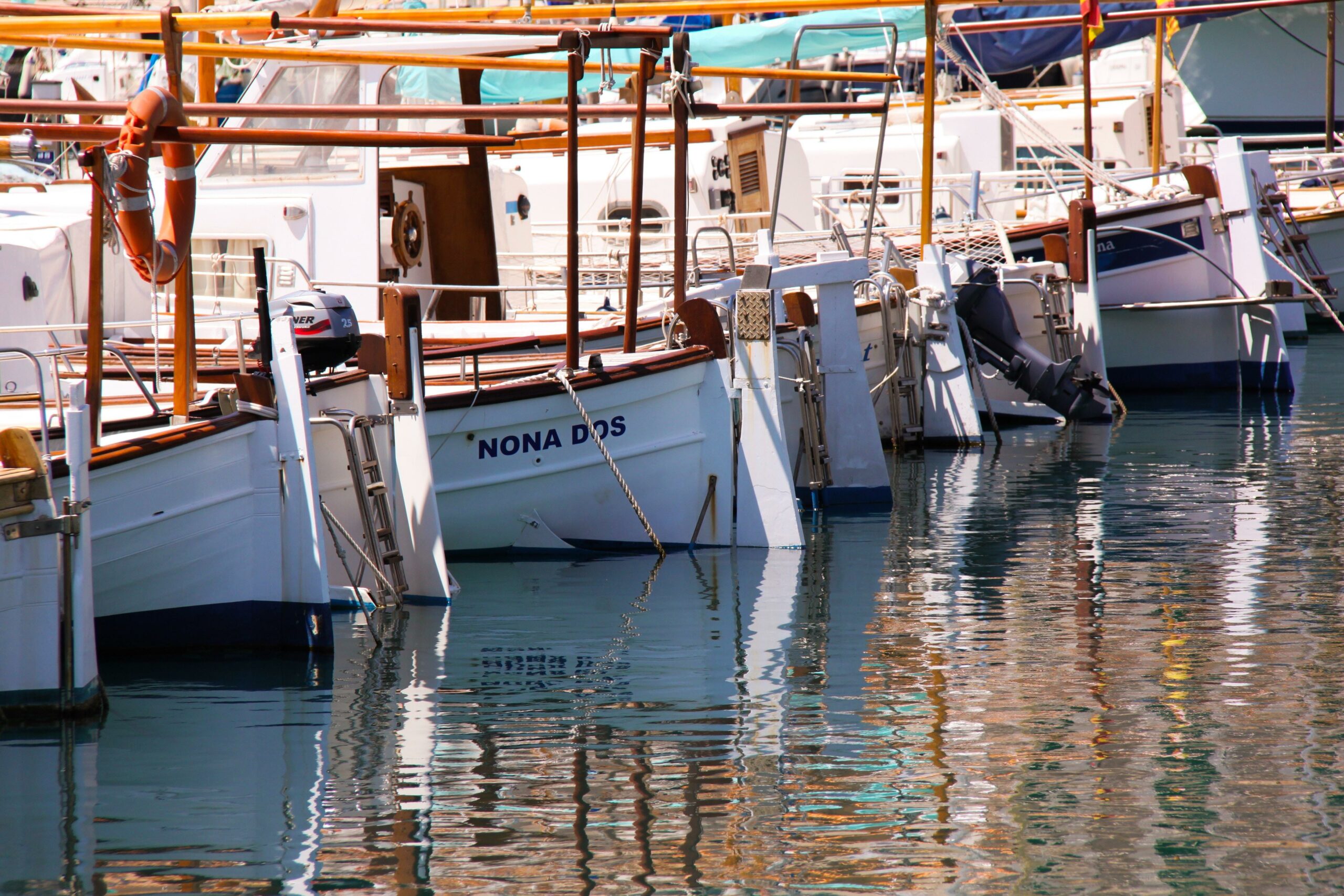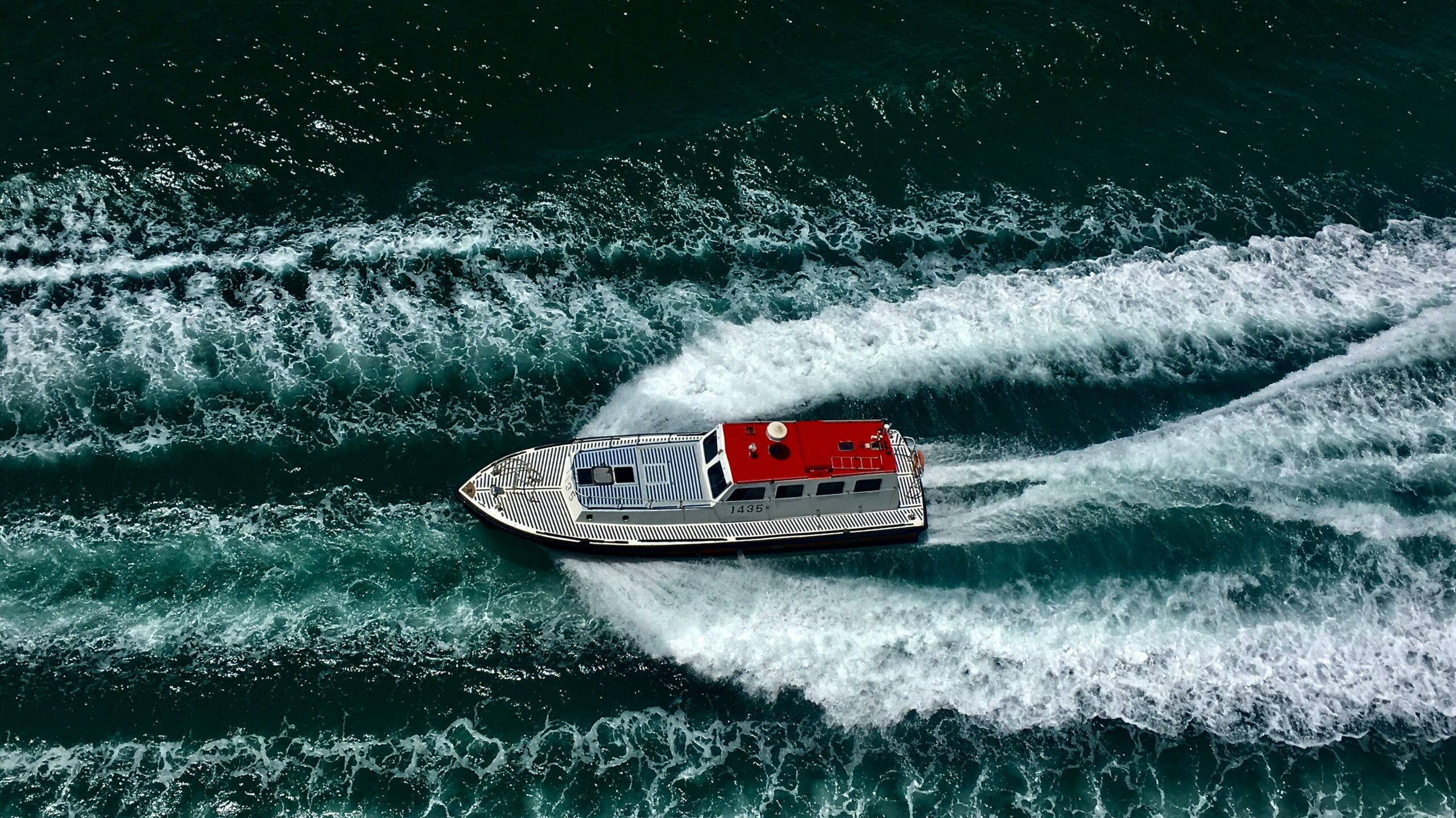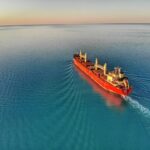The first ships were rafts! Ships have been used for thousands of years. As a seasoned maritime journalist with a deep passion for history and technology, I am excited to unravel the fascinating facts about ships in this article. With over a decade of experience covering various aspects of the maritime industry, including shipbuilding, naval architecture, and maritime regulations, I bring a wealth of expertise to explore the intricate workings and captivating stories behind these majestic vessels. Join me as we delve into the vast ocean of maritime secrets and discover the latest advancements in ship design and technology.

Fascinating Facts About Ships
Ships have always held a captivating allure, evoking visions of grand adventures, historical conquests, and technological marvels. From the ancient Egyptians to the modern era, these immense vessels have played a vital role in shaping our world. In this article, we will delve into the depths of maritime history and uncover some truly fascinating facts about ships.
1. Ships, A Unique Gender: Did you know that ships are often referred to as “she” in English? It’s not just a casual nickname; it is a longstanding maritime tradition. Like a woman, a ship is beautiful, graceful, and reliable. Sailors even believe that she has her own spirit, guiding them through treacherous waters. So next time you gaze upon a mighty vessel, remember her fascinating identity.
“Ships hold a special place in maritime mythology, embodying both strength and elegance. Their female association adds an air of mystique and reverence to their towering presence.”
2. Ship Anatomy 101: Let’s take a peek at the magnificent body of a ship. At the very front, you have the bow, cutting through the waves with determination. Towards the aft, you’ll find the stern, the ship’s rear end. The hull envelops and protects everything within, much like our own skin. And towering above it all, you’ll spot the mast, like a giant sentinel overseeing the whole vessel. Don’t forget the sails, those expansive and billowing cloth wings that harness the power of the wind, propelling the ship forward.
“A ship’s anatomy closely mirrors the human body, with each part playing a crucial role in its structure and functionality. Together, they create a mesmerizing symphony on the sea.”
3. Ancient Mariners: The quest for maritime exploration is as old as civilization itself. The Egyptians were among the pioneers, navigating the seas as early as the 3rd millennium BC. Their vessels were made of reeds and papyrus, showcasing their resourcefulness and ingenious engineering. Clay tablets and containers dating back to 4000 BC depict waterborne vessels, providing us with glimpses into ancient maritime secrets.
“Ancient mariners dared to conquer uncharted waters, defying the limits of their time. Their legacy lives on, reminding us of the indomitable human spirit and our insatiable thirst for discovery.”
4. Versatile Voyagers: Ships aren’t limited to a single purpose. They are versatile vehicles that can carry passengers, cargo, or weapons, depending on their design and purpose. Throughout history, ships have been employed for trade, exploration, and even warfare. They have connected distant lands, opening up new horizons for economies and cultures. Witnessing the evolution of these floating wonders, one can’t help but admire their adaptability.
“Ships have shaped history through their ability to adapt, transforming themselves to meet the demands of changing times. Their versatility serves as a testament to human ingenuity and ambition.”
5. Unveiling Maritime Mysteries: Steeped in history, ships hold countless secrets waiting to be unraveled. The ocean depths are teeming with shipwrecks, offering up tales of lost treasures and ancient maritime tragedies. Each discovery brings us closer to understanding the complexities of our seafaring past and reminds us of the enduring allure of these magnificent vessels.
“Exploring the hidden remnants of ships lost in the annals of time allows us to piece together the puzzle of our maritime heritage. It’s a compelling journey into the unknown, where every find adds another chapter to the story of human triumphs and tribulations at sea.”
Ships have truly stood the test of time, bearing witness to the ebb and flow of human history. Their timeless elegance, engineering marvels, and the tales they carry within their wooden frames continue to capture our collective imagination. So, the next time you lay your eyes upon a ship, remember the fascinating facts about ships and the extraordinary stories that lie beneath the surface.
“Each ship carries with it a legacy of brave explorers, intrepid merchants, and valorous sailors. They are floating time capsules, preserving the memories and wisdom of generations past.”
Facts about ships are always fascinating to explore, so let’s dive right into some incredible knowledge! Did you know that ships come in various shapes and sizes? From gigantic vessels that can transport entire towns, to sleek and speedy ships that cut through the waves with grace and precision. If you’ve ever wondered “How Big Is A Ship?” look no further. Click here to find out more about the different sizes of ships: How Big Is A Ship
Now, let’s sail into the realm of ship types. It’s astonishing to see the wide array of ships that exist, each designed for a specific purpose. From cargo ships that carry tons of goods across the seas, to luxurious cruise ships that offer unforgettable vacations. Curious to learn about the “Types Of Ships”? Click this link and uncover a world of maritime variety: Types Of Ships
Ahoy there! Prepare to be amazed by some interesting and fun facts about boats. Did you know that the world’s oldest known boat is over 10,000 years old? Or that some boats can reach speeds of up to 300 miles per hour? You won’t believe how “5 Facts About Boats” can leave you in awe of their ingenuity. Click here to explore the intriguing world of boats: 5 Facts About Boats
Ready to set sail on an adventure of knowledge? Brace yourself for an astonishing fact overload as we delve into “100 Facts About Ships”. From the earliest known shipwreck dating back over 2,000 years, to the biggest cruise ship that can host over 6,000 passengers, these facts will make you see ships in a whole new light. Don’t miss out on this extraordinary journey, click here to embark on the epic voyage of “100 Facts About Ships”: 100 Facts About Ships
Calling all curious minds! Ever wondered about the captivating world of ships and the incredible stories they hold? Discover the most surprising and “interesting facts about ships” that will leave you in awe of human engineering and the vastness of the world’s oceans. Journey to new horizons by clicking here: Interesting Facts About Ships
The First Ships Were Rafts!
Ships have a long and fascinating history, dating back thousands of years. But did you know that the very first ships were actually rafts? Yes, you heard it right! These primitive vessels were made by tying logs together, forming a platform for early humans to navigate waterways and explore new territories.
Imagine floating on a raft made of logs, your only means of transportation across vast bodies of water. It’s hard to fathom, isn’t it? Yet, it was on these simple rafts that our ancestors began their maritime journeys, paving the way for the development of sophisticated ships we know today.
As humans evolved and civilizations began to flourish, ships played a crucial role in their growth and prosperity. Egyptians, for instance, were among the pioneers of maritime exploration. They navigated the seas with vessels constructed from reeds and papyrus as early as the 3rd millennium BC. These early boats allowed them to travel along the Nile River and trade with their neighbors, opening up new opportunities and expanding their influence.
But it wasn’t just the Egyptians who recognized the potential of ships. The Greeks and Romans, too, harnessed the power of boats to explore the world and engage in trade. They ventured into uncharted waters, crossing vast distances and establishing connections with far-flung lands. Their ships became the lifeline of their empires, enabling them to expand their territories and shape the course of history.
Ships have always been more than just vessels. They are symbols of exploration, trade, and warfare, acting as catalysts for change and progress. Throughout history, nations have relied on ships for their economic growth, as they transported goods, resources, and people across vast oceans.
Fast forward to the present day, and ships continue to play a vital role in our interconnected world. Did you know that the largest container ships today can carry over 23,000 containers? That’s mind-boggling! These enormous ships traverse the world’s oceans, ensuring the smooth flow of international trade and enabling us to enjoy goods from all corners of the globe.
It’s truly awe-inspiring to see how the development of ships has evolved over time. Technological advancements and design innovations have improved their efficiency and capabilities. From the invention of sails that revolutionized maritime travel to the use of steam and, eventually, diesel engines, ships have become increasingly versatile and powerful.
The story of ships is the story of humanity itself. They have shaped our economies, cultures, and even our way of thinking. They have connected us, bridging continents and fostering international relations. Ships have carried explorers, merchants, and soldiers to unknown lands, leaving their mark on history.
So the next time you see a ship, take a moment to appreciate the remarkable journey it represents. From humble rafts to towering vessels that span oceans, ships continue to captivate us with their elegance, engineering marvels, and the countless stories they carry within their hulls.
The first ships were rafts, simple platforms made from logs tied together. These early vessels laid the foundation for the magnificent ships we see today, showcasing humanity’s ingenuity and spirit of exploration.
Ships have been used for thousands of years.
Ships, those magnificent vessels that have sailed the seas since time immemorial, hold within them a rich tapestry of history and adventure. From the earliest reed boats crafted by the ancient Egyptians to the state-of-the-art ships of today, these floating marvels have been a constant presence in human civilization. Whether it’s for trade, exploration, war, or simply the joy of sailing, ships have played an integral role in shaping our world.
Ancient civilizations, such as the Egyptians, recognized the potential of ships and were among the first to take to the water. Using reeds and papyrus, they built sailing boats that allowed them to navigate the Nile River and trade with neighboring civilizations. These early vessels, though simple in design, paved the way for future maritime exploration.
As time progressed, ships evolved in both structure and purpose. The advent of oars and wind power brought a new era of sailing, enabling ships to venture farther and faster. The Greeks and Romans embraced this newfound technology and sailed vast distances, establishing connections with distant lands and expanding their empires. These bold explorers opened up new trade routes and expanded the reach of maritime commerce.
Throughout history, ships have served diverse roles. They have been the lifeblood of trade, carrying goods and resources across oceans, connecting nations, and driving economic growth. Ships have also played a vital role in times of war, transporting troops, weaponry, and supplies to the frontlines. From the legendary warships of ancient times to the mighty armadas of the 20th century, ships have dominated the battlefields of the seas.
But ships have not only been tools of trade and warfare. They have also captured our imagination, becoming the subjects of stories, legends, and myths. From tales of pirates to ghost ships disappearing into thin air, maritime folklore is as captivating as the ocean itself. Shipwrecks, lying in the depths of the sea, hold secrets and treasures, whispering tales of lost civilizations and the tragedies of the past.
In the present day, ships continue to stand as icons of human achievement. Modern technology and advanced materials have revolutionized shipbuilding, resulting in vessels that are more efficient, environmentally friendly, and comfortable. From massive cargo ships that can carry thousands of containers to luxurious yachts that epitomize elegance and opulence, ships continue to push the boundaries of innovation. They are the lifeblood of global trade, transporting an incredible array of goods across the oceans and connecting people and cultures from all corners of the world.
Looking to the future, ships will remain vital to our world. As technologies such as autonomous navigation and renewable energy continue to develop, ships will become even more advanced and sustainable. These floating wonders will continue to shape our economies, cultures, and international relations, fostering exploration, trade, and connectivity.
In our quest to understand the secrets of the seas, we are continually drawn to the captivating allure of ships. With each journey they undertake, ships carry within them a wealth of history, stories, and dreams. They are a testament to human ingenuity, reflecting our desire to conquer the unknown and explore new horizons.
“Through the tides of time, ships have been the vessels that carry our stories and aspirations, uniting nations and igniting our imagination. They are the majestic guardians of our seafaring past, present, and future.”
Did You Know? Big Ships Are Faster Than Small Ones
[youtube v=”N5-oRGei88o”]
Big ships are often faster than small ships. But did you know that one specific color can protect entire ships? Meet the bulbous bow, a critical component of modern ship design. Situated at the front of the hull, it may look strange, but it serves a practical purpose. Developed in the 1930s, the bulbous bow has become a standard feature on most large ships, including cargo ships, tankers, and cruise ships.
This bulb-like structure, located just below the waterline, works by creating a wave that helps reduce the ship’s resistance as it moves through the water. When a ship moves, it creates waves at the bow and stern that create resistance, slowing the ship down and requiring more energy to maintain speed. The bulbous bow creates a wave that interferes with the bow wave, thus reducing resistance and making it easier for the ship to move through the water.
The bulbous bow not only improves a ship’s performance and reduces fuel consumption, which helps to minimize its environmental impact, but it also has significant economic advantages. By reducing fuel consumption, ships can save on operating costs, ultimately resulting in cost savings for customers.
The Protective Power of Red Paint
When looking at ships below the waterline, you may notice that most of them are painted red. But have you ever wondered why? It turns out that there is a reason for this choice.
The red paint serves a practical purpose beyond just appearances. It acts as protection against marine organisms such as barnacles, algae, and other types of marine life. These organisms can attach themselves to the ship’s hull and cause serious damage, resulting in increased drag, reduced speed, and higher fuel consumption.
The red paint contains a copper-based biocide, which acts as a deterrent, preventing marine organisms from attaching to the hull and causing damage. In addition to its protective properties, the red color also has practical benefits. It makes it easier for divers and inspectors to spot any damage or potential issues with the hull, as the contrast between the red paint and the surrounding water makes any damage more visible.
In conclusion, the red paint not only adds a visually appealing touch to ships but also serves as a protective shield against harmful organisms in the water. It helps prevent damage to the ship’s hull, reducing operating costs and improving overall efficiency.
Waste Management on Ships
Each ship that cruises around the world generates a significant amount of waste throughout its journey. With thousands of passengers and a substantial crew on board, waste management becomes a crucial aspect of ship operations.
The International Maritime Organization (IMO) regulates the handling of waste on ships, requiring them to follow specific guidelines for storage, treatment, and disposal of waste. While some waste does end up in the oceans, ships must follow designated procedures for eliminating trash.
Solid waste generated on board is separated into different categories, including recyclable, non-recyclable, hazardous, and food waste. The waste is then sorted in designated areas until it can be properly treated or disposed of at the next port of call. According to the IMO, no waste should be thrown into the ocean.
Sewage and wastewater generated on board are also regulated by the IMO and must be treated before being discharged into the sea. These waste management practices ensure that ships minimize their impact on the marine environment.
The Need for Speed: Why Big Ships Are Faster
If you’ve ever seen a large cargo ship or a cruise ship gliding effortlessly through the water, you might wonder why it seems to move much faster than smaller vessels nearby. The truth is, the largest ship is generally much faster than its smaller counterparts, thanks to a combination of factors.
One of the most significant factors contributing to the speed of large ships is their powerful engines and propulsion systems. These ships have more thrust, allowing them to move through the water more efficiently. With greater power, large ships can achieve higher speeds with less effort, while smaller vessels struggle to reach the same high speeds.
Another factor is the size of the vessel itself. The bigger the ship, the longer the waterline length. This length, which is the part of the hull in contact with the water, determines the maximum speed a ship can achieve. With a longer waterline length, large ships can take advantage of greater waterline length to achieve higher speeds.
Furthermore, large ships often have a more streamlined hull design, which helps to reduce drag and improve speed. The shape of the hull plays a significant role in how a ship moves through the water. A streamlined design helps reduce resistance, allowing the ship to move faster.
Overall, these factors make big ships faster than their smaller counterparts. However, it’s important to note that there are exceptions where smaller vessels can sometimes outpace larger ones.
The Role of Ship Stabilizers
Ships worldwide share many similarities in design, but some key features can set them apart based on their purpose. One of these crucial features is ship stabilizers. They play a vital role in ensuring the stability and safety of ships at sea.
Ship stabilizers are important for various reasons. They improve passenger comfort and safety, reduce crew fatigue, and protect cargo from damage. These stabilizers work by using a combination of fins, gyroscopes, and other mechanisms to counteract the natural rolling and pitching movements of a ship at sea.
The fins used for stabilization are located on the port and starboard sides of the ship and can be extended or retracted to adjust the stabilizers as needed. They counteract any rolling or pitching that occurs, enhancing ship stability.
Ship stabilizers not only reduce motion but also help prevent cargo shifting or being damaged due to excessive rolling or pitching. Additionally, they improve the safety of a ship by reducing the risk of capsizing or other accidents.
These stabilizers are crucial for any ship, especially the larger ones responsible for transporting numerous passengers or a significant amount of cargo.
The Versatility of Hovercrafts: Ships That Can Operate on Land
Imagine a vessel that can operate not only on water but also on land. Such a vessel exists and is called a hovercraft. Hovercrafts are incredibly versatile and find applications in various fields.
Hovercrafts use a cushion of air to lift them above the surface, reducing friction and allowing them to glide over water or land. A flexible skirt surrounding the bottom of the vessel traps a cushion of air beneath, lifting the hovercraft. It is then propelled forward using an engine or propeller system, enabling it to move across water or land.
Due to their versatility, hovercrafts serve multiple purposes. They are commonly used as search and rescue vehicles, offering swift movement across water and land to reach people in need. They also find application in military and law enforcement operations, as well as tourism and recreational activities.
Hovercrafts stand out as unique vessels resembling airplanes since they hover over a cushion of air. However, they are mainly used on the open sea, easily switching between being a vessel or a vehicle.
The Constant Need for Fuel
A huge cruise ship sailing across the ocean requires an enormous amount of fuel to power its engines and propulsion systems. Each ship, regardless of its size, relies on large quantities of fuel for its journeys.
The fuel used by ships is heavy fuel oil produced from crude oil refining processes. Once the fuel reaches the ship, it is stored in sizable tanks on board and used to power the engines and generators.
Acquiring fuel for a ship involves a complex process with multiple stages. Crude oil must be extracted from the ground and transported to a refinery. From there, the oil is produced and transported to a port where it is loaded onto the ship. The fueling process itself can be time-consuming, requiring specialized equipment to carefully load a large amount of fuel onto the ship.
In recent years, there has been a growing interest in alternative fuel sources for ships, aiming to make them more environmentally friendly and sustainable. Shipbuilders are exploring options beyond traditional fuels, fueling hopes for a more eco-friendly and sustainable future for the shipping industry.
In conclusion, ships rely heavily on fuel to power their journeys across the world’s oceans. While current practices predominantly use heavy fuel oil, there is increasing momentum to transition to more sustainable and environmentally friendly alternatives.
Remember, ships are not just vessels traversing the seas; they are complex entities with various components and purposes. From innovative design features like the bulbous bow and ship stabilizers to unique vessels like hovercrafts, the world of ships is a fascinating one, encompassing environmental considerations, waste management, and propulsion systems. Understanding the intricacies of ships allows us to appreciate the immense role they play in global transportation, exploration, and trade.
FAQ
Q: What were the first ships made of?
A: The first ships were made of rafts and canoes that were constructed by tying logs together.
Q: How long have ships been used by humans?
A: Ships have been used for thousands of years by humans for various purposes such as exploration, trade, and warfare.
Q: Who were some of the early traders to use ships?
A: Ancient Egyptians were among the first traders to use ships.
Q: What advancements revolutionized maritime travel?
A: The invention of sails revolutionized maritime travel, allowing ships to travel further and for longer distances.
Q: How have ships shaped the economies and cultures of nations?
A: The use of ships has shaped the economies and cultures of nations throughout history, facilitating travel, exploration, and trade.
- China II Review: Delicious Food & Speedy Service - April 17, 2025
- Understand Virginia’s Flag: History & Debate - April 17, 2025
- Explore Long Island’s Map: Unique Regions & Insights - April 17, 2025
















